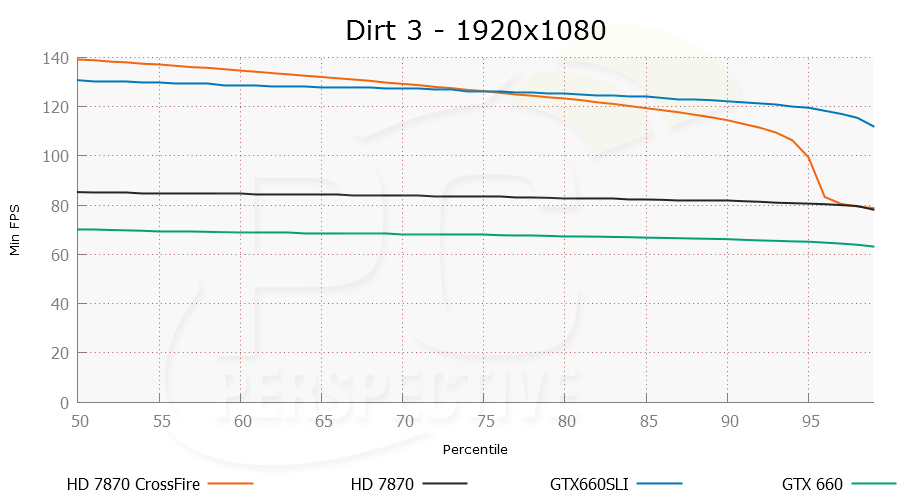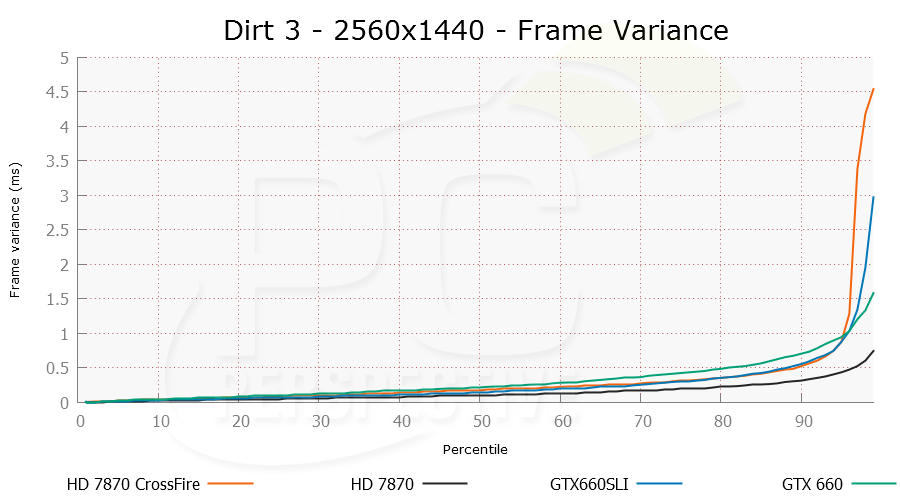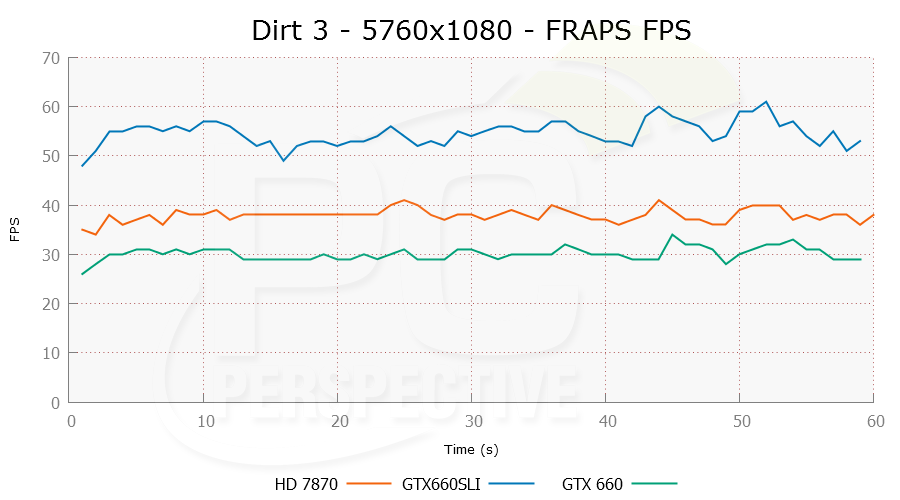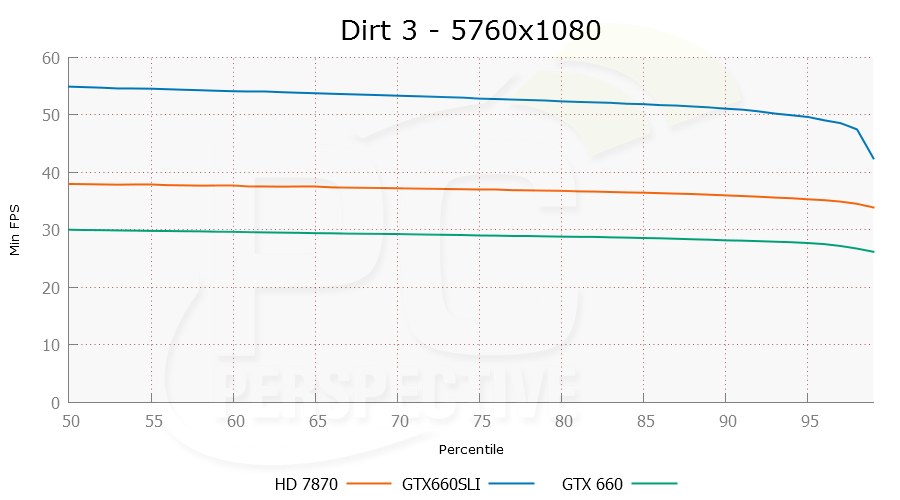DiRT 3 – GTX 660 vs HD 7870
DiRT 3 (DirectX 11)
A continuation of the Colin McRae series, but without his name, DiRT 3 is one of the top racing games in the world and offers stunning imagery along with support for features of DirectX 11.



Our settings for DiRT 3
In DiRT 3 the single card performance of the single Radeon HD 7870 is clearly better than that of the single GTX 660 from NVIDIA. When we double up the GPU count for each vendor though we see a couple of drops in observed frame rate on the CrossFire side.
Both the sudden drops in performance as showed in our observed frame rate above matches with the dramatic episodes of frame variance in our frame time plot here. Clearly the alternating high frame time, low frame time pattern for these several second instances are affecting animation performance and gaming experience.
Because those episodes of frame variance are only a small portion of the CrossFire result at 1920×1080, the frame rate graph shows interesting results. The "average" frame rate for the entire run as estimated by the 50th percentile is actually higher on the HD 7870s in CrossFire than on the GTX 660s in SLI, but at the 75th percentile, it swaps and NVIDIA's SLI is the faster setup. This essentially means that 25% of the time, the GTX 660s in SLI are going to be faster than the HD 7870s in CrossFire. And for that last 5%, pretty dramatically so!
As a result, the frame variance data has the CrossFire result with a deficit throughout the game run with SLI and single GTX 660 results very close. The best performer is the HD 7870 single card that maintains a very consistent frame variance level throughout.
At 2560×1440 the tables turn on the multi-GPU results and even at the FRAPS level the GTX 660s look like the faster option. Taking out the runts results in performance LOWER than a single card by quite a bit. Single GPU consideration though still leaning heavily towards the HD 7870 over the GTX 660.
Clearly the Radeon HD 7870s are having more problems in CrossFire than they did at 1080p settings, but SLI scales well and also has pretty limited frame time variance with only a handful of spikes in frame time to cause concern.
The gap between the single HD 7870 and the GTX 660 is more noticeable here with an increased average frame rate advantage of 31%, consistently. The SLI GTX 660s also have a strong showing with a very flat frame rate graph.
Because of the dropped frames on the CrossFire, its frame variance data doesn't look as bad as you might expect, though it does spike up suddenly at the 95th percentile. The best performer though is still the single HD 7870.
Because of the number of dropped frames and how it affects our processing scripts, we don't have results for the HD 7870 in CrossFire! Looking at the results we do have though you can see that the HD 7870 in its single card configuration is faster than the GTX 660 and actually makes Eyefinity quite playable on a single GPU for this title. SLI does scale well on the GTX 660 though allow for frame rates over the 50 FPS mark most of the time.
The orange line that represents the HD 7870 card has the thinnest, tightest line in our frame times indicating the most consistent frame times. The GTX 660 is just fine as well though and only the GTX 660 SLI results in a handful of hitches and spikes in frame times.
NVIDIA SLI scales DiRT 3 at 5760×1080 from 30 FPS to 55 FPS on the GTX 660s (83%) but the HD 7870 keeps the single card crown.
For the majority of our frame variance percentile graph the GTX 660, in single card form, actually has the most variance though by eyeing the scale on the left hand side you'll see we are talking about times under 2 ms – very minimal. Even SLI is able to keep within a 6 ms variance time at the 99th percentile.




















It would be nice to see how a
It would be nice to see how a pair of gtx 580’s fares, as I have these in my setup. Pretty please! *_*
I can’t stress enough how
I can’t stress enough how amazing this is.
I have one or two questions though:
1. Is the ATI/AMD Dual-GPU cards like the HD7990 have the same “problems” has dual cards in SLi?
I have an HD5970 and I do recognize there are problems as far as stutter is concerned but, I notice, I have a clear visual “feeling” that something is not right in a very few games. Mostly those “heavy” titles like “Metro2033” and the new “Crysis 3”.
2. Is the problem something related to the hardware itself, is it drivers or is it a mix of both?
Sorry, I meant “problems has
Sorry, I meant “problems has dual cards in Crossfire?”